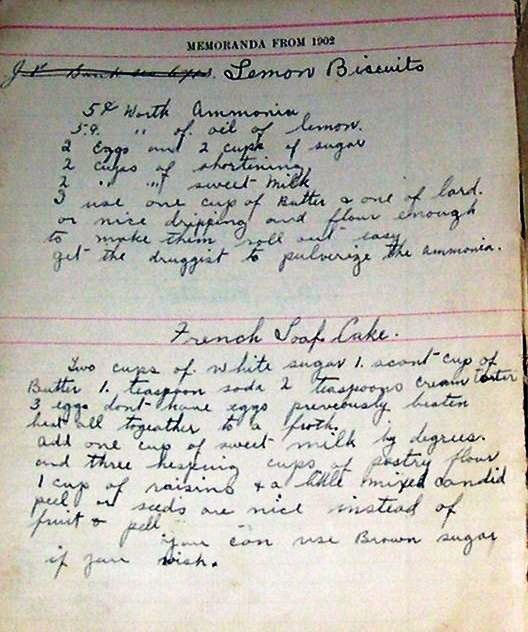Family Recipe Journals - A Time Tested Tradition
Keeping a journal of our favorite recipes is a tradition that goes back as long as we've been cooking in the kitchen and we've had access to pen and paper. When it comes to creating the family cookbook, or maintaining a personal journal of recipes, perhaps we have the advantage today with the help of modern technology, websites like FamilyRecipeCentral.com, word processors, and the like. But the fundamentals aren't a whole lot different than a hundred years ago. We love collecting recipes today. And we loved collecting them 100 years ago. The fact of the matter, we've probably been keeping track of family recipes in one form or another since time immemorial. And the challenge of keeping our recipes organized is certainly nothing new! Here's a fun example of a page from a family recipe journal circa 1902 that I found on Flickr.com

Admittedly, the hand writing is pretty good (compared to most penmanship today). But let me transcribe for you here in case you're having a little trouble deciphering.
Lemon Biscuits 5 cents worth ammonia 5 cents worth of oil of lemon 2 eggs and 2 cups of sugar 2 cups of shortening 2 cups of sweet milk I use one cup of butter and one of lard. Or nice dripping and flour enough to make them roll out easy. Get the druggist to pulverize the ammonia.
French Loaf Cake 2 cups of white sugar 1 scant cup of butter 1 teaspoon soda 2 teaspoons cream tartar 3 eggs - don't have eggs previously beaten but all together to a froth Add one cup of sweet milk by degrees. And three heaping cups of pastry flour. 1 cup of raisins and a little mixed candied peel or seeds are nice instead of fruit and peel. You can use brown sugar if you wish.
5 cents of ammonia ... Now there's an unusual ingredient. And an interesting unit of measure, albeit somewhat relative by inflationary terms. Anybody care to guess how much ammonia 5 cents would buy you in 1902? And what exactly does ammonia do for lemon bars? Sounds a little toxic to me. Actually, using ammonia in cooking goes back many years. Apparently ammonia (or bicarbonate of ammonia) was used as a leavening agent before baking soda or baking powder was available. If you actually want to try this recipe, you can substitute double acting baking powder for the bicarbonate of ammonia.
- editor's blog
- Login or register to post comments
- Trackback URL


